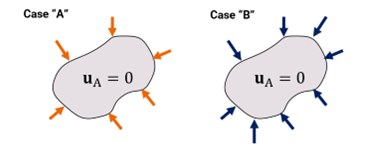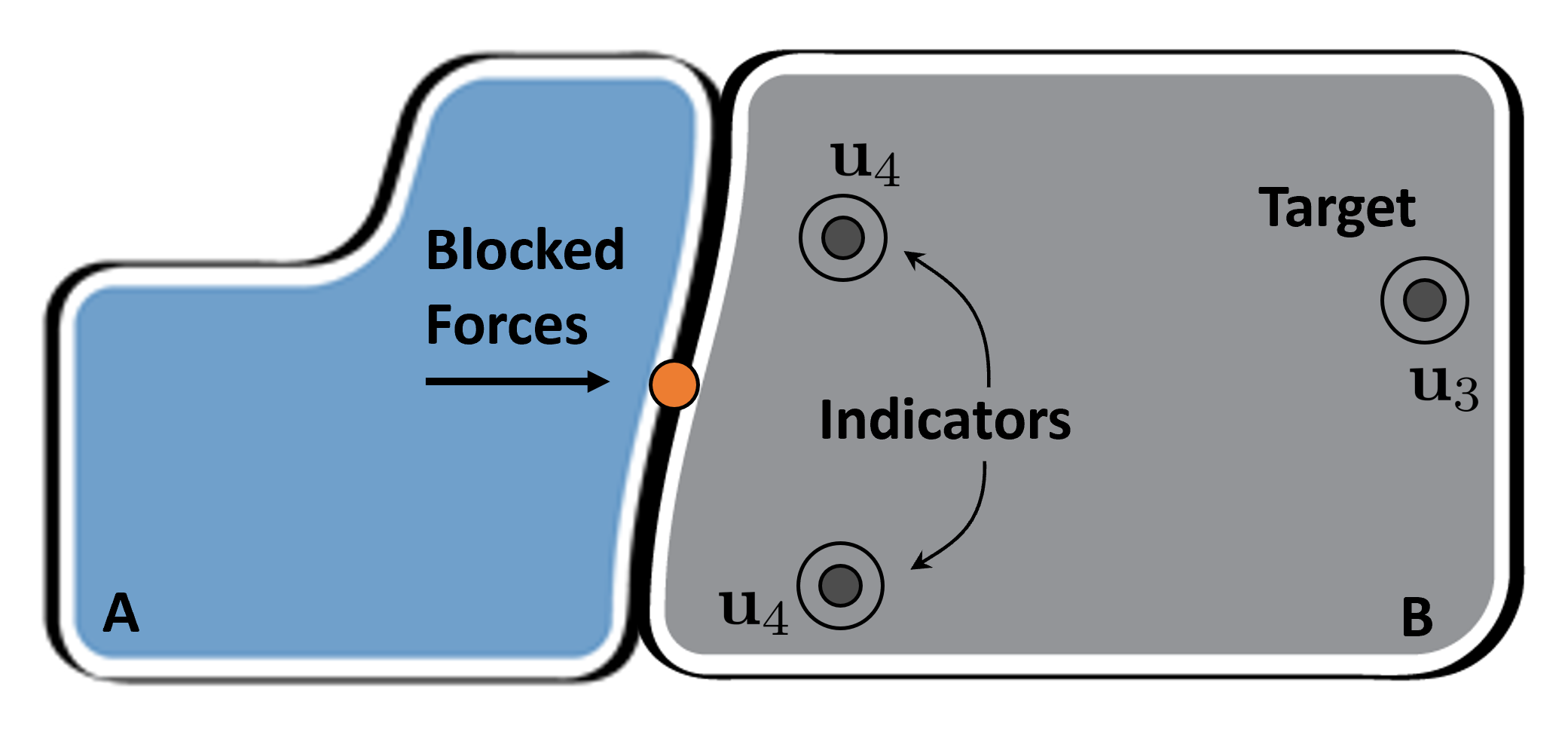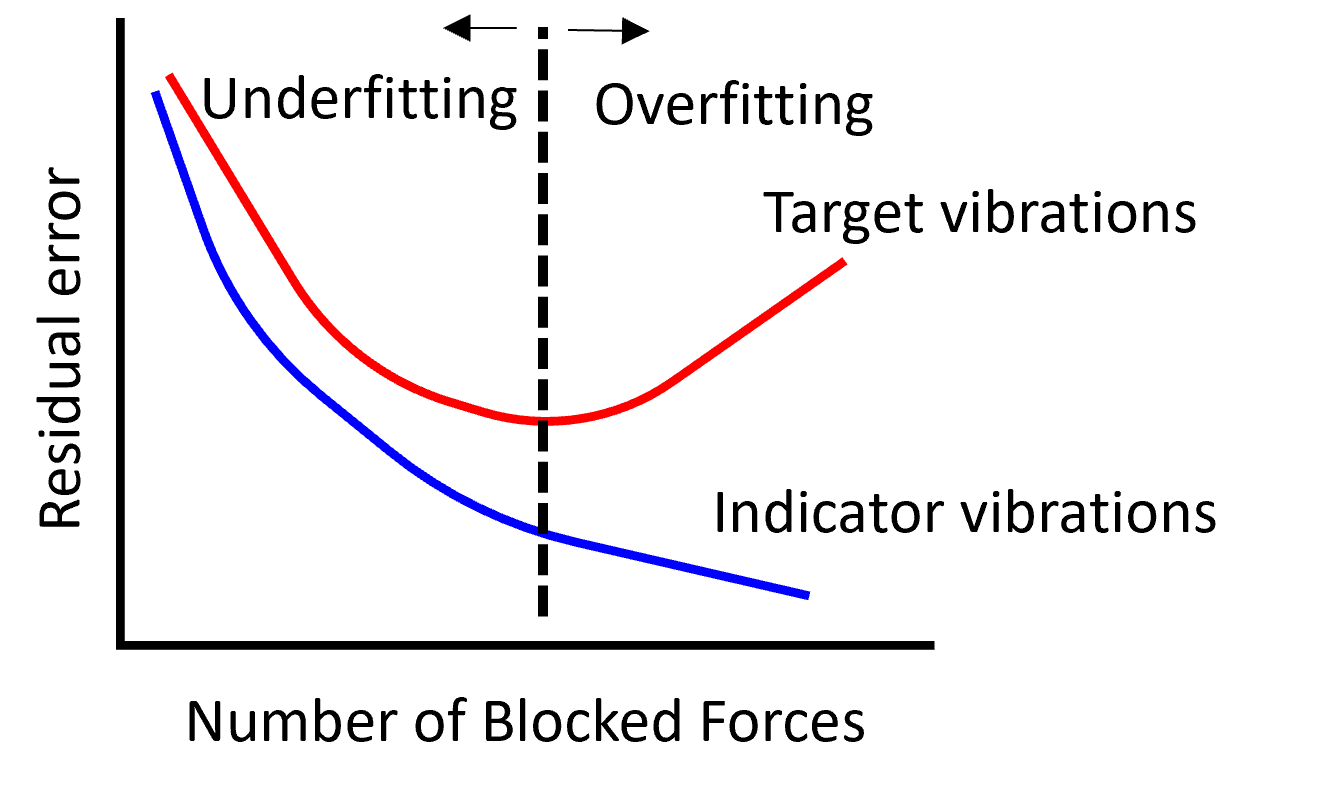Patent pending! X-DoF improves your Blocked Forces
25 October 2023
“How should I model my system?”. This is one of the questions that our engineers encounter often. There are an infinite amount of ways to block a system. So which one should you choose? How many forces and moments should you use?
With too few DoFs you run into underfitting issues, which means the dynamics are not properly described. Too many DoFs lead to overfitting, which means including noise in your model.
That is why, we at VIBES, have developed X-DoF, a patent-pending algorithm that selects only the essential DoFs needed to describe your system’s dynamics.
Characterizing a vibrating source with Blocked Forces
In source characterization, the excitation due to an active component (A) can be modeled by Blocked Forces at the interface, independently of the receiving structure (B). Blocked Forces are a set of forces and moments that block the interface. Based on the in-situ method, Blocked Forces can be inversely calculated from the indicator sensors. When applied to any receiving structure, they can be used to predict vibrations downstream at the target locations. Read more about Blocked Forces and TPA here.
What are the effects of including/excluding Blocked Force-DoF?
So, how many Blocked Forces do you need to block the interface? A too-small amount of Blocked Force-Degrees of Freedom (DoFs) leads to an incomplete source description, so to underfitting. This is typically reflected by a high error at the indicator sensors and a high error at the target sensors.
On the other hand, describing the source with too many DoFs results in redundancy within the equivalent description, where not only the system’s dynamic is modeled, but also noise. This is referred to as overfitting and can lead to decreased prediction accuracy at target sensors.
Finding a proper amount of DoFs is essential to reduce the error both at indicator and target sensors.
Drawbacks of existing methods
Currently, two key approaches address overfitting in inverse methods:
- Regularization mitigates ill-conditioning. It can be difficult to objectively select the right regularization parameters such as the number of singular values, absolute, and relative thresholds. These settings might also only be valid for a limited frequency range.
Every engineer gets different results due to choices in matrix regularization.
- NVH Engineer from OEM -
- Expert users manually select DoFs and base their decision considering factors such as engineering know-how and trial and error (try various Blocked Force combinations and choose the “best” one).
Both of these methods are not ideal because they are subjective and not repeatable.
X-DoF selects proper DoFs automatically
X-DoF is a new approach developed by VIBES to make the inverse calculations for Blocked Forces more robust and objective. X-DoF automatically selects only the DoFs that are necessary to describe the dynamics at the indicator sensors, reducing the risk of overfitting (which leads to improved predictions at the targets).
With X-DoF, you only need to click a button and the algorithm selects the necessary DoFs without any settings or parameters. This is what makes X-DoFs a robust and objective approach.
Patent pending
Since this algorithm significantly improves the calculated Blocked Force quality and generalization, we decided to patent it. The patent is still pending, but you can already use “X-DoF” in SOURCE (link).
Example case
Do you want to see how X-DoF improves the quality of your Blocked Forces? Then check this example case in our Academy (link).
More info:
Jelle Boelens
Jelle joined VIBES after completing his master's degrees in System and Control and Biomechanical Engineering at TU Delft. As a research engineer, he uses his knowledge to develop new technologies and implementing them in our products.
Eleonora Cesari
Eleonora works as Customer Success engineer at VIBES. She holds a master in Aerospace Engineering from TU Delft





